The Algarve
Portugal is such a likeable country. They’re kind of like Canada, beautiful scenery, a reputation for being popular, friendly, noncontroversial and a great place to visit. Portugal punches above its weight in soccer (or football), global explorers, the production of cork, rose wine and stunning coastlines. Plus they are the home of port which is so good it is sometimes too likeable. From the outside looking in Portugal is on a winner.
And amongst many cultural, historic and natural attractions in Portugal one stands out – the Algarve. The Algarve is Portugal’s southern coastline, cloaked in history, lined with beautiful beaches and famous for late summers. Which is good because its late summer for us and we’re on the hunt for beautiful beaches.
Avoiding the expensive toll roads and grateful we’ve moved into Europe’s ‘shoulder’ season, we left Spain and dropped down to the coastal road that follows this beautiful coastline. And stretching along the first section of this coast is Ria Formosa National Park covering an extensive area where the river, its estuary and a series of sand bars, shallow waterways, lagoons and low islands create a fabulous environment for wildlife and human sunseekers.
We stopped at the small cobbled town of Tavira and wandered amongst its narrow streets, explored its old castle and enjoyed the convivial Portuguese atmosphere. We couldn’t quite get the language but between Spanish and English it seemed we wouldn’t starve. We then headed for the small fishing town, now tourist town, of Fuseta which sits amongst the sand bars of the river’s estuary and still retains its sleepy demeanour.
We camped near the beach and enjoyed an afternoon on the sand before going in town and finding a table on the shady town square where cold beers and beautiful fish were served until we said pare. And we loved the word these polite Portuguese kept saying – obrigado – thank you. First impressions are important and Portugal nailed it.
Before low cost carriers and mass development the Algarve was regarded as a somewhat quiet and forgotten coastline where people came to get away from the hustle and bustle of a European summer. Those idealistic days are long gone and today most of the Algarve that is not protected by national park is lined with high rise complexes and overpriced restaurants. But there are diamonds in this beautiful rough, such as the long sandy beaches that are reachable by ferry, the old fortress, church and tower in Faro and the stunning church in Almancil with its wall-to-wall hand-painted tiles that left us gaga.
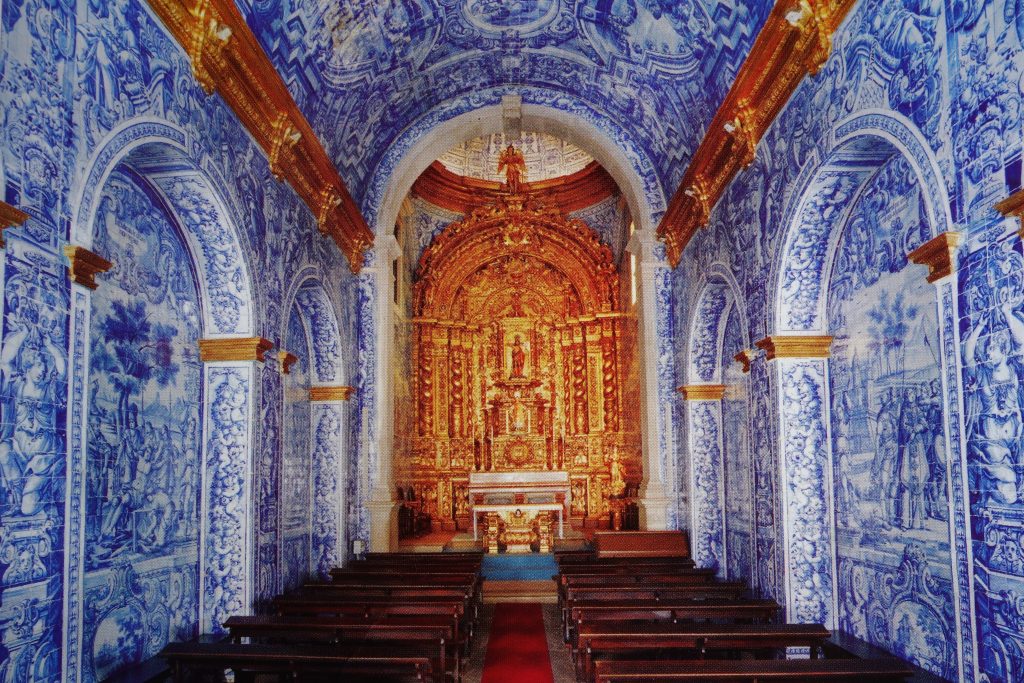
The stunning interior of the church of Sao Lourenco in Almancil with its wall to wall to ceiling coverage of beautifully hand painted tiles
We headed for the small town of Sagres pitched out on the point of southwestern point of Portugal and visited the old fort that has been used by many occupiers over the centuries to keep other potential occupiers out. Our walk along the cliff lines gave us great views of the beaches nearby and the benign ocean down below.

The small church cut a handsome pose within the walls of the Sagres Fortress, for centuries guarding the southwest coast of Portugal
Then it was out to Capo Sao Vicente, the southwestern-most point of Europe, to take in the expansive views all around and marvel about how 700 years ago during Portugal’s famous Age of Discoveries their brave sailors would get one last glimpse of land at this point before heading off into the great unknown. Amazing stuff.
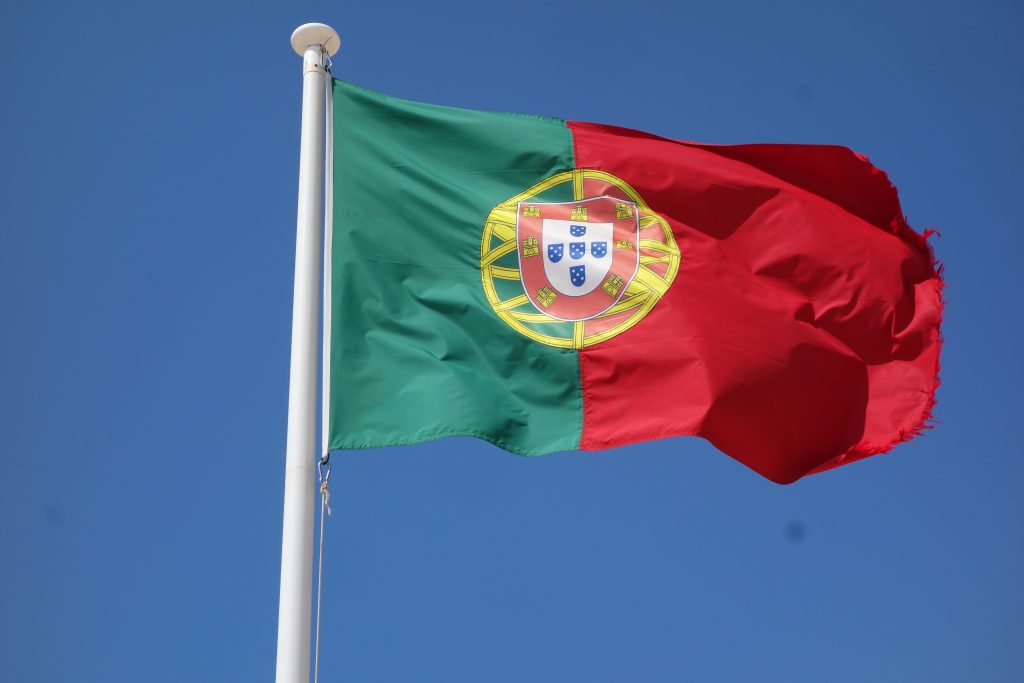
The colourful Portuguese flag flies proudly at Capo Sao Vicente, waving goodbye to all those amazing Portuguese explorers
We camped that night just north of the Cape in the convivial parking lot at Cordoama Beach, a remote haven at the end of the road for surfers and sunseekers. It was a beautiful place to end the day, made more special by it being my birthday. A year ago on the same day we were camped in an obscure spot in northern Alaska and in sub-zero weather watched the Northern Lights dance across the sky. A year later it’s a beautiful sandy beach in southern Portugal. Not too bad.
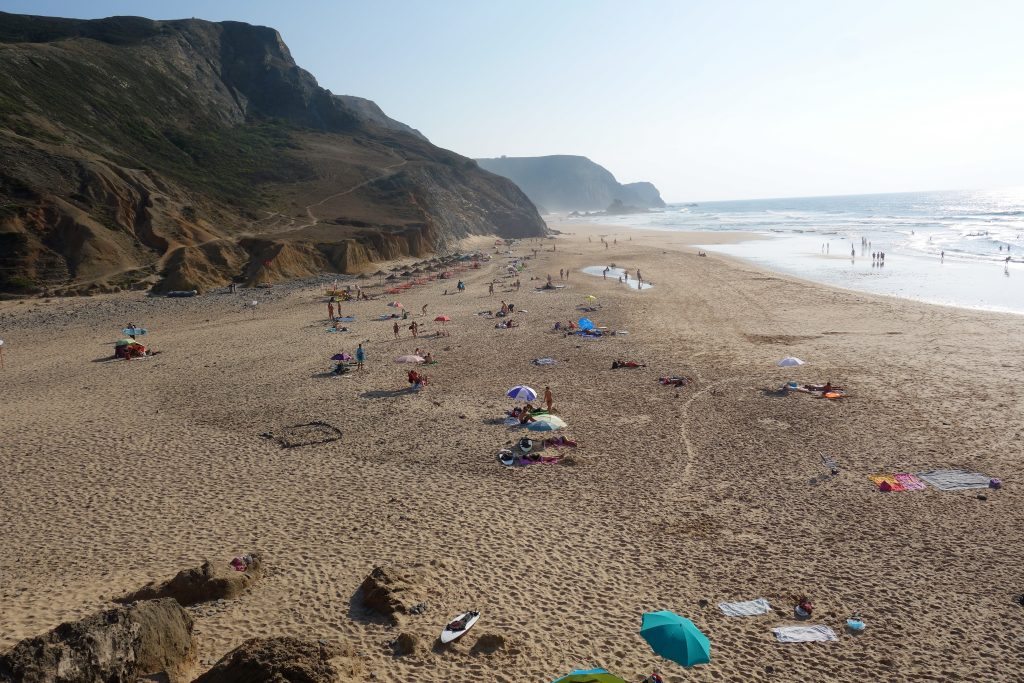
Not a bad view for the birthday boy – enjoying some sun and sand on one of the Algarve’s Atlantic beaches
Feeling a tad underdressed without a wetsuit and surfboard, the next day we hit this beautiful beach and enjoyed a lazy morning soaking in the rays and swimming in the crystal clear water. You could tell summer was deserting us but the southern Portugal summer hangs on longer than most places and it was fun to be part of this happening beach scene.
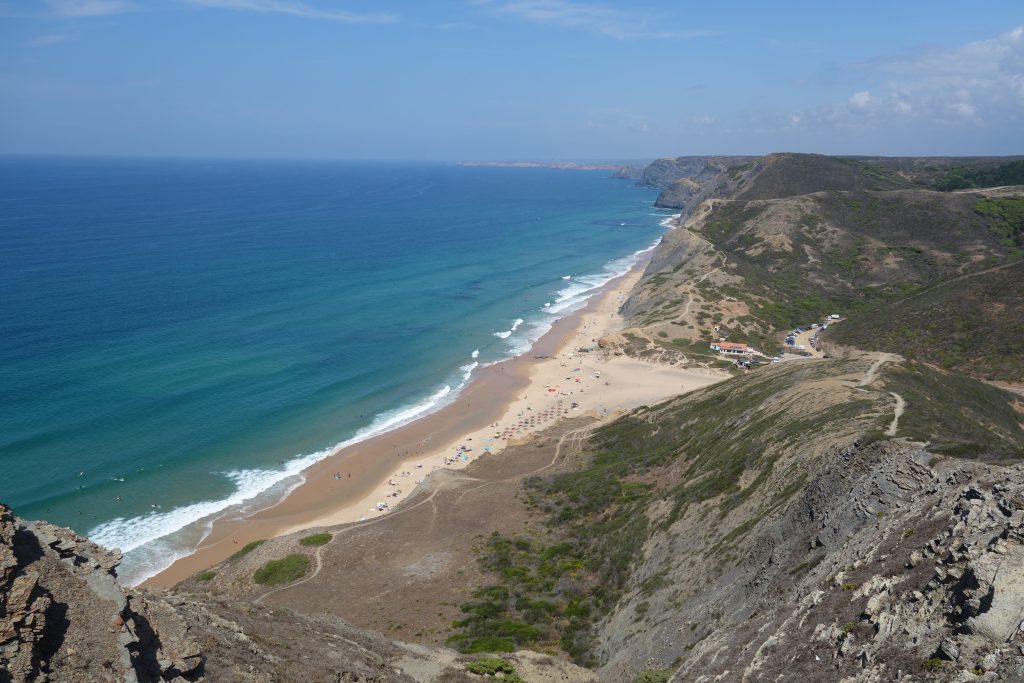
A view of our overnight spot and our beach after Tramp took us up to a high vantage point the next day
We reluctantly headed north, stopping off a couple of times to check out other long golden beaches and also stopped to see the large slabs of cork – which is really just bark from the cork tree – piled up after harvest and waiting for transport. Portugal does cork like no other and wine drinkers worldwide are thankful.
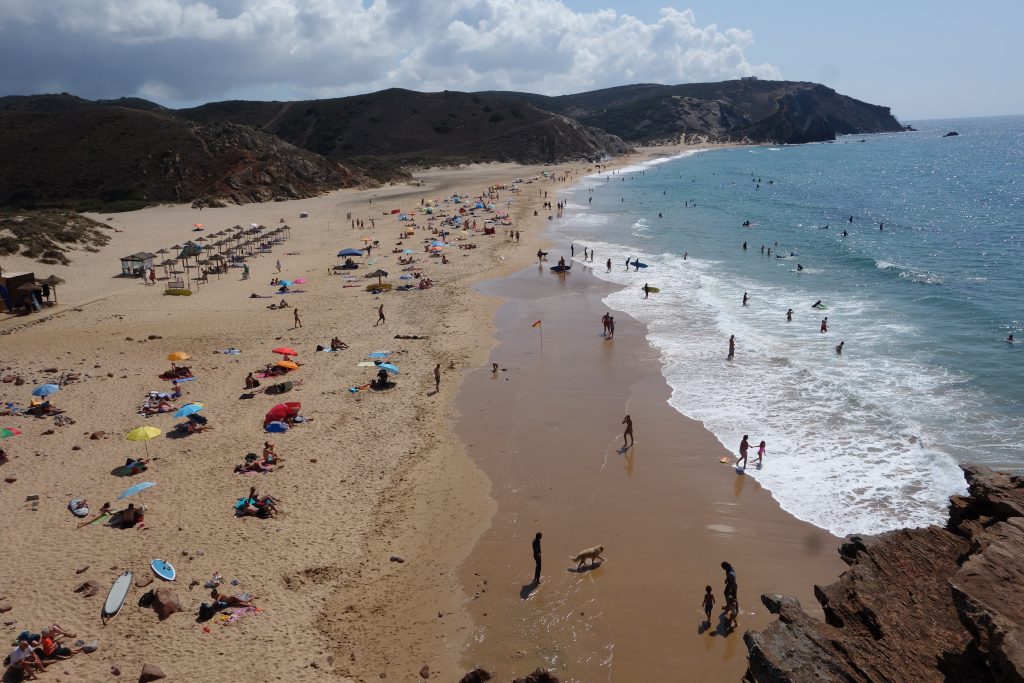
Amado Beach, where we pulled in for a quick look, was understandably popular with both locals and visitors
Eventually we pulled into camp at the town of Vila Nova de Milfontes at the mouth of the Mira River where it flows through the national park and into the cold Atlantic. Shoulder season had definitely set in and the campsites were more spacious and less chaotic. The next morning we headed north through more cork trees, some showing their red base after their cork bark had recently been cut off and made our way across the spectacular 24 April Bridge to Portugal’s capital, Lisbon.

Welcome to the world of cork. These cork trees have all been skinned of their bark, which will then take about ten years to regrow.
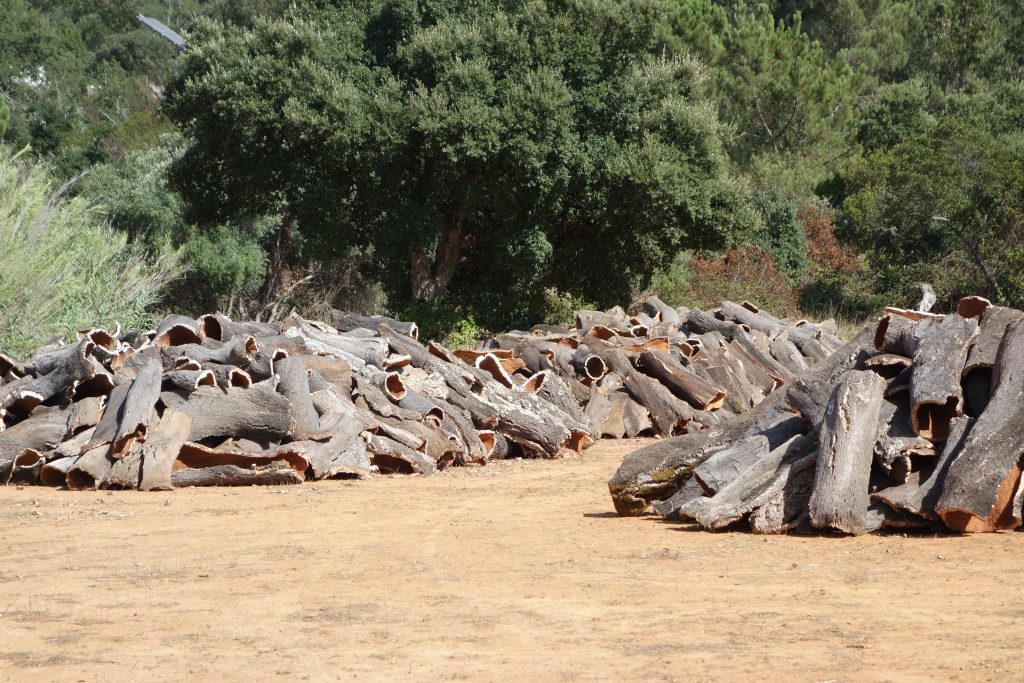
Piles of skinned cork from nearby trees waiting for transport to the cork factory…or wherever cork goes before it ends up in your wine bottle
Lisbon is a nice-sized city, about 500,000 people, set on the banks of the wide Rio Tejo and the historic launch pad for so many great explorers in the late 15th and early 16th century. From these waters brave sailors such as Henry the Navigator, Bartholomew Diaz and Vasco do Gama, to name a few, sailed off into the Atlantic at a time when most people thought the earth was flat and sailors would simply sail off the end.
But these men, and dozens others such as Christopher Columbus and Ferdinand Magellan (who was Portuguese but sailed for Spain) dramatically expanded the known world at that time, sailing around Cape Horn, established passages to India, mapping unknown coastlines, found what became known as the Straights of Magellan and many other amazing discoveries.
These men, who sometimes were away for many years at a time, or never came back at all, with rudimentary navigation equipment redrew the maps, brought home priceless metals and spices, claimed land for their kings and queens. Now dubbed the Age of Discovery, this period in our history is like no other for the expansion of geographic knowledge of the world. I tip my hat to them.
Julie and I spent the afternoon learning more about this grand time when Lisbon was one of the great cities in the world and riches of all types were flowing in from all over the world. We explored the wonderful Monastery of Sao Jerome which was built during the Age of Discovery with the riches delivered to the King by his explorers and has served various religious purposes ever since.
We also hit the great Maritime Museum which celebrated the Age of Discovery and the men, ships, weapons and equipment that made it all happen. We finished with climbing the Discoveries Monument on the river’s waterfront which features stone carvings of all the great explorers, led by the genius trailblazer himself, Henry the Navigator. We could barely drag ourselves away to set up camp for the night.
The next morning we caught the 714 bus from our tired old campground near Lisbon, probably as old as the tall gums we camped under, and explored another part of this fabulous city. Lisbon has a network of cute little stubby trams that run on tracks all over the city, including up and down the steep hills. We jumped on one tram and rode it to the top of the hill overlooking the downtown area which is covered by the 12th century castle of Sao Jorge. From the walls of this castle we had fabulous views of the city, including the endless sea of terra cotta tile roofs and the Tejo River nearby.
From there we walked down through the narrow cobblestone streets of the Alfama area with its strong Moorish origins, hand-painted tiled walls, weathered narrow doors and washing hanging from the windows before having lunch and catching our bus back to camp. We had the awful feeling that we were cutting Lisbon short – it seemed to have so much to offer but we only had a couple of weeks to get up to the UK and out of these Schengen visa countries.
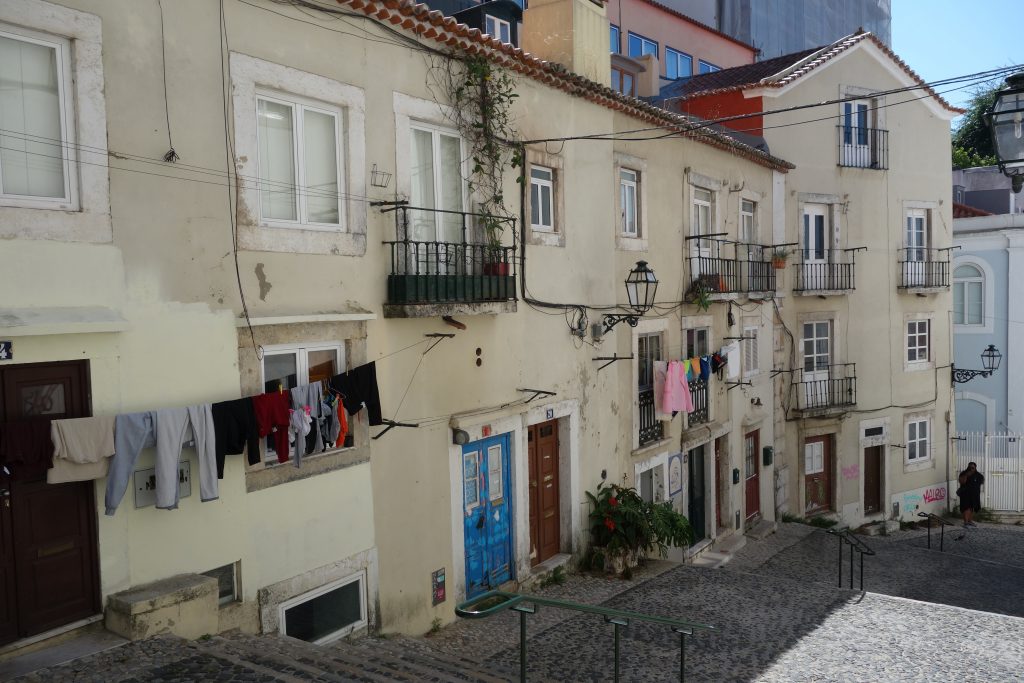
A typical street scene in the Alfama, people going about their lives in a historic and beautiful setting
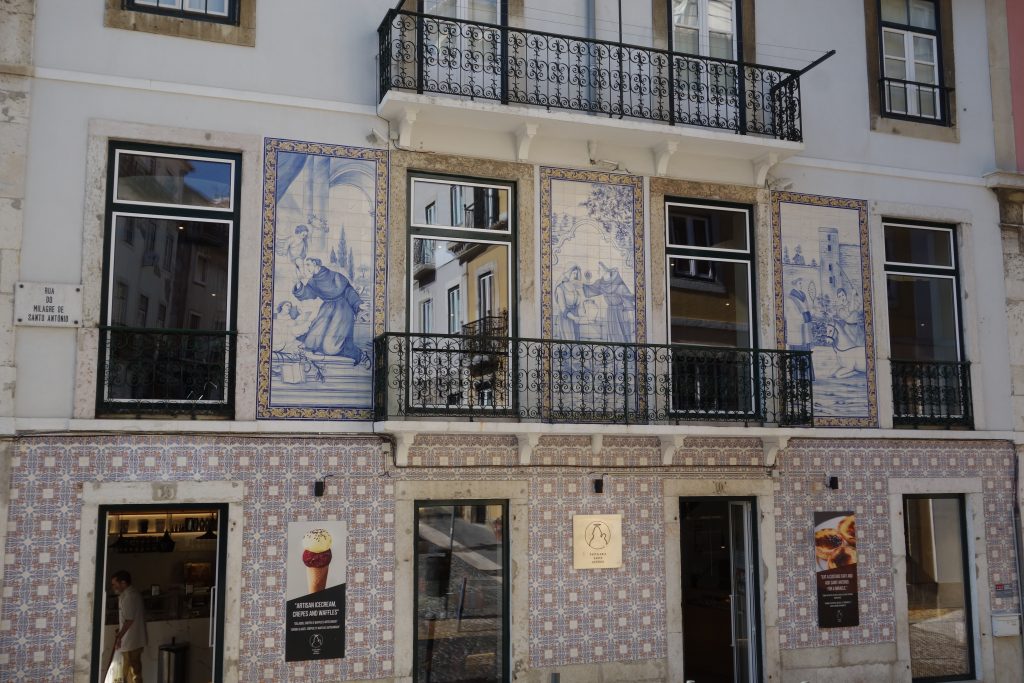
The tiled walls of the buildings in Lisbon were a popular feature, something not seen anywhere else on our trip
On our way north we wanted to visit the historic town of Sintra perched on the hills outside of Lisbon but the lack of parking and devilishly narrow switchback roads – which required Tramp to do five point turns to negotiate – meant we had to give up and move on. Sometimes the travel stars are not in alignment and you have to cut your losses.
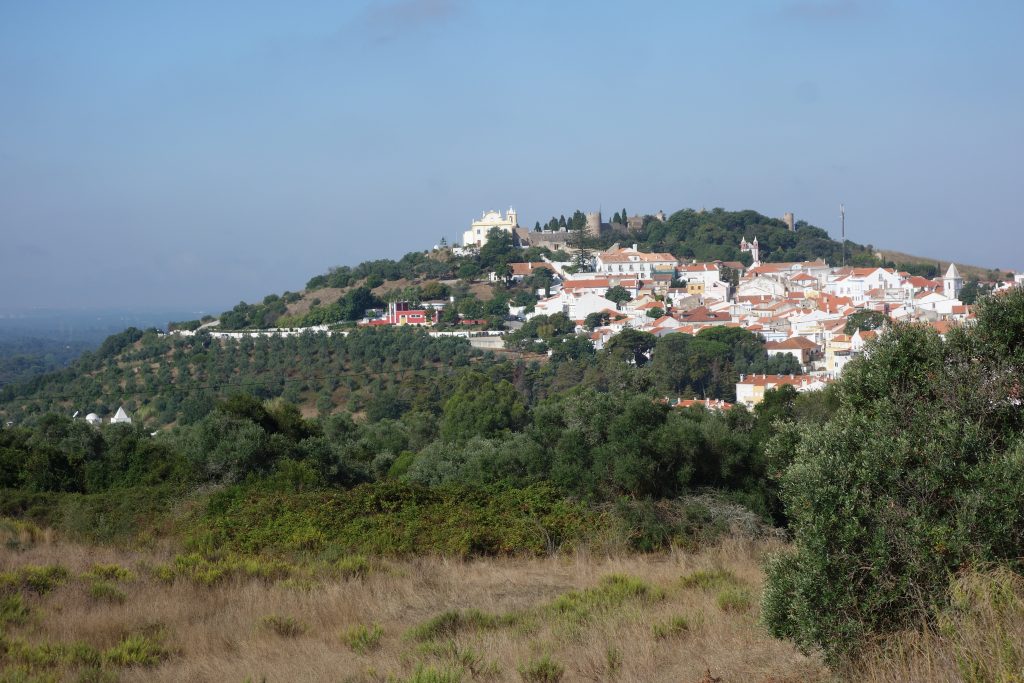
Picturesque hilltop towns are everywhere in Portugal. This is a smaller one but the large historic town of Sintra proved too much for Tramp
Portugal had so far proven to be a huge hit – the history, culture, beaches and national parks were all first class. But we needed to head north and explore more of this country before passing back into Spain. Can’t wait!
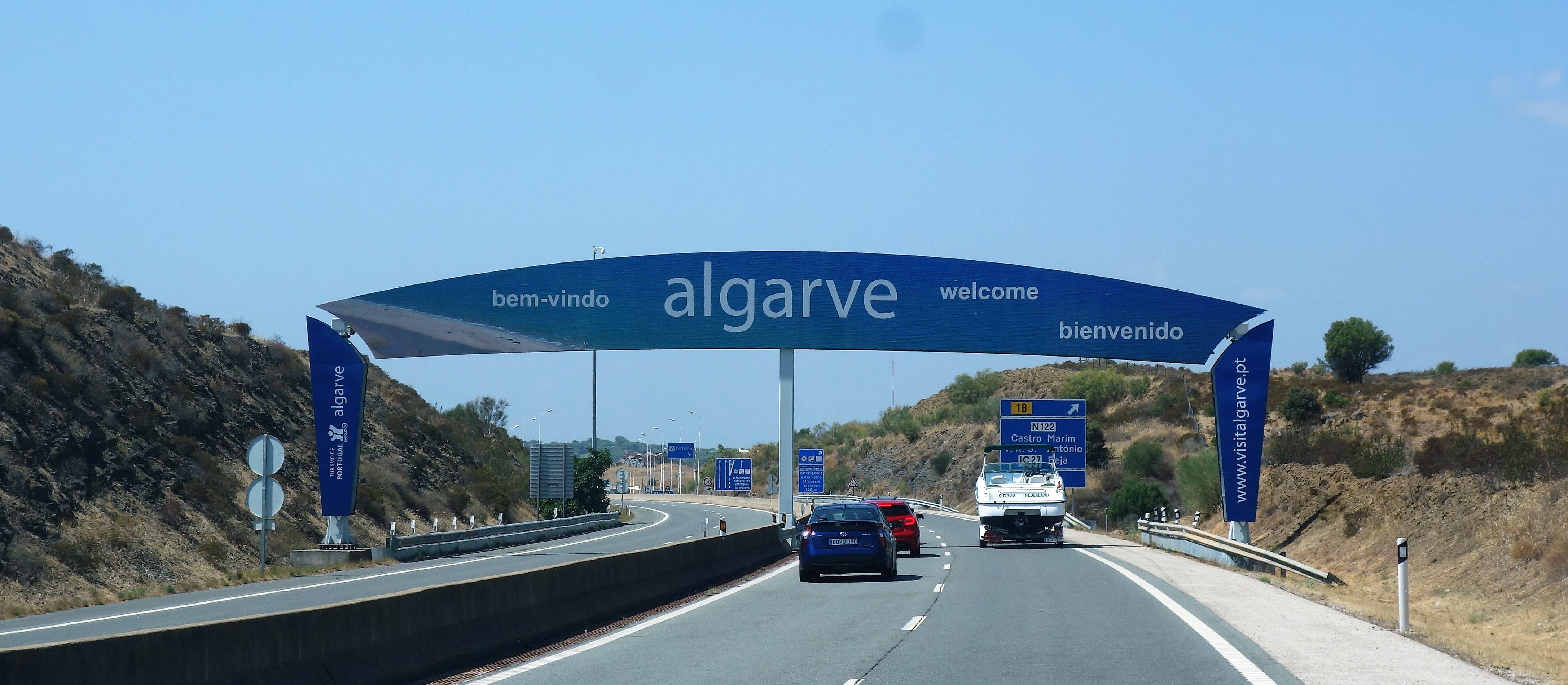






















Happy belated birthday Bill. If you list off the places you have celebrated your birthday in to this one, you have an amazing list we are all so envious of.
Enjoy your travels to the UK and bet you are anxious to catch up with family on your return to Australia and get your share of cuddles.
Love you both
xoxo
Thanks Anne. And yes, we definitely love our Australian cuddles! Bill